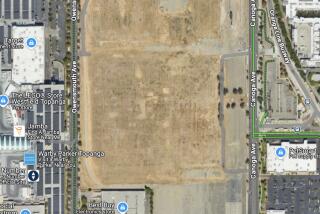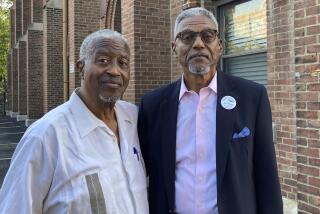Full Health Study Urged at Rockwell Santa Susana Lab : Chemicals: Panel meeting in Simi says inquiry should be expanded beyond just DOE employees at site.
A health study of employees at Rockwell’s Santa Susanna Field Laboratory should look at chemical hazards faced by all the company’s employees, not just risks to workers under contract to the Department of Energy, an advisory panel overseeing the study said Thursday.
The panel’s two-day long meeting in Simi Valley erupted in confusion and dismay when when panel members discovered that a research team from UCLA-- under direction from DOE and Rockwell--was planning to limit its study to effects of chemicals encountered by DOE workers.
Rockwell employees who worked under DOE contracts represent only a quarter of the estimated 40,000 people who have worked at the Santa Susanna site since the early 1950s, Rockwell officials said.
The panel ordered Rockwell to release records to UCLA pertaining to all employees and chemical exposures.
The study, begun last fall, is trying to determine if there has been an unusually high incidence of cancer and other illnesses among Rockwell workers over the years due to exposure to chemicals and low levels of radiation.
The study was commissioned in 1991, and DOE is paying its estimated $840,000 cost. The study is being conducted by a team of scientists, headed by Hal Morgenstern, a UCLA professor of public health.
Though health records and death certificates for all employees, past and present, are being examined by the UCLA scientists, in-depth epidemiological studies were to be conducted on the effects of radiation and on chemicals with which DOE workers came in contact.
Heather Stockwell, acting director of DOE’s office of epidemology said the scope of the study was limited because other agencies that contracted with Rockwell, including NASA, refused to take part.
“I think we have to include other workers,” she said. “But we don’t have the jurisdiction to make other workers participate. DOE is funding a study that has to do with DOE workers.”
Morgenstern said he agreed to the restrictions in negotiations with Rockwell and DOE last fall.
“I would like to look at everything,” Morgenstern said. “But out of necessity, we can’t. There is no way we would have the resources to cover every chemical used at the facility.”
Dan Hirsch, a panel member who also belongs to the community-based group Rocketdyne Clean-up Coalition, said the meeting increased his skepticism of the study.
“I was particularly distressed that the UCLA team on its own would negotiate restrictions with Rockwell and DOE,” Hirsch said.
Several panel members said they believed DOE workers were not exposed to a number of toxic and carcinogenic chemicals that employees in the rocket testing area came in contact with regularly, including hydrazine, tricholoroethane and beryllium.
“Hydrazines were used only in the Rocketdyne rocket-testing area,” said community representative Sheldon Plotkin. “We in the community want to know about the hydrazine effects on those workers. What I want to know, is UCLA going to include that in this study?”
John Rozas, director of health and safety at Rocketdyne, the division of Rockwell that operates the Santa Susanna site, said he believed the company has cooperated fully with the UCLA team.
“Every bit of data we have has been available,” Rozas said. “We’ve not said, you can’t look at this, we’ve only said, remember the focus is on DOE-funded areas.”
Rozas called the confusion a misunderstanding, and told panel members that Rockwell’s only concern, under advisement from their legal council, was that the research team not be allowed to look at salary and income records for past employees.
However, Morgenstern said salary records are key to completing a thorough epidemiologic study. He told the panel he would return to them with recommendations on which chemicals the study should focus on once preliminary research is complete in September, 1994.
More to Read
Sign up for Essential California
The most important California stories and recommendations in your inbox every morning.
You may occasionally receive promotional content from the Los Angeles Times.










